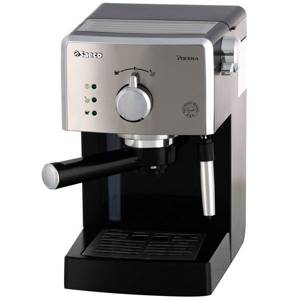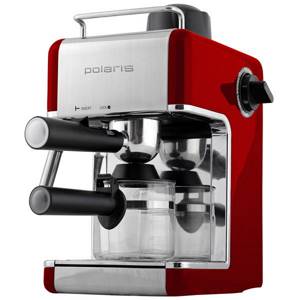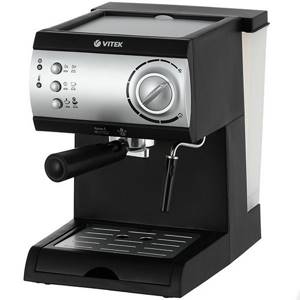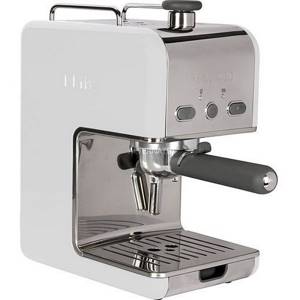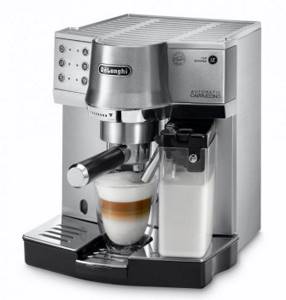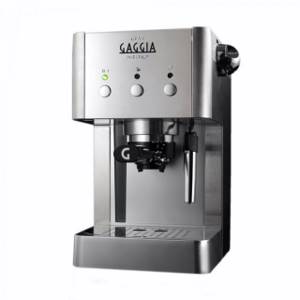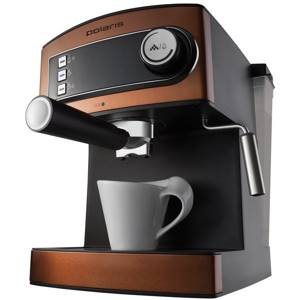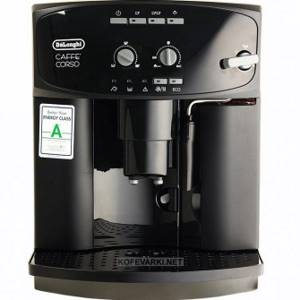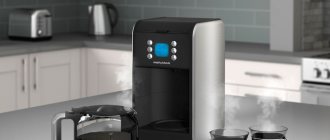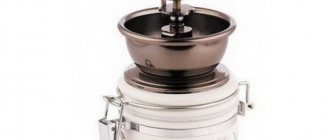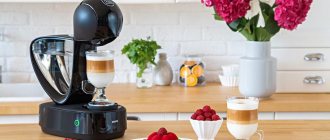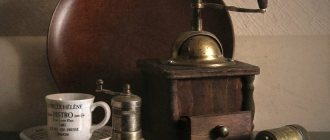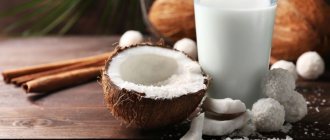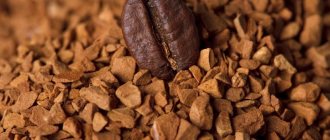A coffee machine with the option of adjusting the portion of hot water is perfect for those who like to “drink in large mugs” or for those who like to “take their time” with a cup of excellent coffee. With this function, it is easy to prepare a non-standard coffee drink, since you can manually adjust the amount of water supplied by the machine for both a large mug of 500 ml and a small one of 100 ml. Don't worry, the volume will not affect the strength of the drink.
Operating principle of carob coffee makers
Carob coffee makers, according to the principle of their operation, differ from the method of conventional preparation of coffee drinks, in which ground coffee beans are mixed with purified water and brought to a boil. In carob devices, water is not added to the coffee, but steam is passed through it under high pressure. It condenses inside a special compartment, turning into an aromatic drink, which is poured into a cup, preferably preheated.
Typically an espresso type device works as follows:
- the boiler is filled with water;
- Ground coffee powder is placed inside the cone, compacting it;
- turn on the device;
- under the influence of steam, the prepared drink is poured into a heated cup.
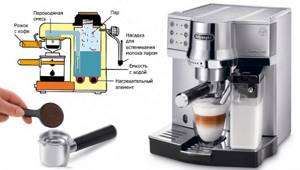
Operating principle of a carob coffee maker
Structurally, the device includes:
- boiler or tank;
- a pump or vibration pump providing steam pressure from 4 to 15 bar;
- heating element, which is represented by a flow-through thermoblock, a storage boiler of different volumes, or a boiler with a heat exchanger.
Attention! The cost of the device depends on the type of heating element. The presence of a thermoblock in inexpensive devices often provides an advantage over a small-volume boiler. This heating element provides a fairly large volume of hot water without requiring frequent heating.
Mechanisms of pump coffee machines
These machines use different types of pumps: vibration, rotary and gear. Ivan says that vibration pumps are commonly used in super-automatic coffee machines and that they are “very unstable when it comes to pressure control because they operate at a fixed pressure.”
He says that "the pressure can rise from 4 bar at the beginning of the extraction to 14-16 bar at the end of the espresso." It happens that you yourself want to change the pressure profile, because, as you know, unplanned uneven pressure can have a bad effect on the espresso.

©https://www.perfectdailygrind.com
Professional machines usually use rotary or gear pumps. Ivan says that “rotary pumps are constant and stable. However, you should monitor, check and adjust them based on wear and tear over time.”
“Gear pumps are used in the best coffee machines and work together with rotary pumps, but with independent pressure control,” explains Ivan. “The pressure can be changed manually or through programmable options that the barista sets depending on the desired extraction profile. Some espresso machines have both manual and programmable settings.”
Professional pump coffee machines often have three-way relief valves to relieve pressure and allow you to brew multiple espresso shots in a row.

©https://www.perfectdailygrind.com
The advantage of a semi-automatic or automatic pump coffee machine is better stability control. This is why high-end coffee machines usually have multiple boilers. They allow you to heat the water for brewing coffee separately from the water used to create steam. This allows for better temperature control and reduces the likelihood of overextraction.
Sean says that “for better temperature control, you have multiple boilers at your disposal: a separate boiler for the brew groups and a separate one for water and steam.”
But Ivan warns that even with a high-quality coffee machine there will be some instability. “Some machines are better than others, but remember that these machines are made by us humans, and we are not perfect, which is why there is no perfect espresso machine,” he says.
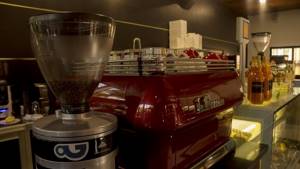
©https://www.perfectdailygrind.com
Advantages and disadvantages of espresso coffee makers
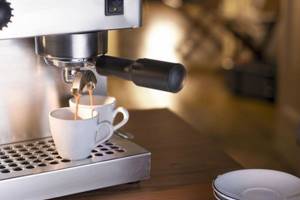
The main advantages of these devices include:
- no sediment at the bottom of the cup;
- the pleasant taste of the invigorating aromatic drink is preserved, which becomes more concentrated and rich;
- one serving is prepared quite quickly;
- hot steam is sent directly to the ground coffee, which helps extract beneficial substances from it;
- a delicate, tasty foam forms on the surface of the prepared drink;
- no constant purchase of filters is required.
Among the disadvantages are:
- mid-price segment models often do not contain additional modes that make it possible to prepare certain types of coffee drinks;
- there is no provision for a coffee grinder;
- quite high cost;
- there is no built-in cappuccino maker;
- difficult to disassemble the device for cleaning.
Important. Some devices contain self-cleaning systems. But their presence significantly increases their cost.
Types of espresso coffee makers
The main types of these devices are distinguished according to the following criteria:
- Steam.
Pumpless type of coffee makers. It is the principle of bringing water inside the tank to a boil, creating a steam pressure of up to 4-5 bar. Condensation from the steam settles in the container, making the drink richer.
The power of such devices is approximately 1 kW. Moreover, the process itself involves preparing 2-4 cups of brewed coffee at a fairly low pressure, which requires more time.
- Pump
The device belongs to pump models. The pump inside the device creates a pressure of up to 15 bar, and its power is usually 1-1.7 kW. This option is considered more economical; much less time is spent preparing a coffee drink.
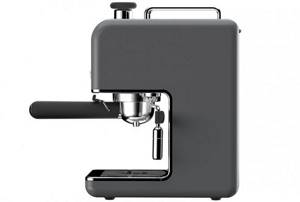
Pumpless espresso coffee maker
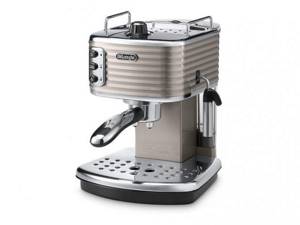
Pump espresso coffee maker
Important. To understand how best to choose an espresso coffee maker for your home, you need to take into account the required volume of the coffee drink being prepared, as well as the time spent on it.
Criteria for choosing espresso coffee makers
- The operation of horn devices is based on the action of steam under high pressure. This means that the choice of the most functional coffee device depends on the amount of steam pressure. For home devices, it is enough that it is 4-9 bar;
- An important selection criterion is the material from which the horn and body are made. The body of the device can be metal or plastic, but it is better to choose a metal horn;
- Another important criterion is the boiler capacity, which ranges from 0.5 to 2 liters. The larger its volume, the more expensive the device will be and the larger in size. The most optimal container size for home use is 1 liter.
- An important criterion that influences the choice of coffee maker is the ability to use factory-made bags (pods) in addition to ground coffee;
- It is also very important to consider its dimensions when choosing a coffee maker.
Advice. Before choosing an espresso coffee maker in a store, you need to take into account the size of the room where you plan to install it. In order to save space occupied by the coffee machine, it is advisable to know its dimensions.
Superautomatic machines
Superautomatic machines do everything themselves. The machine grinds the coffee, weighs it, fills the portafilter and tempers the ground coffee. Press the button and get the same coffee every time. Some machines allow you to customize the grind size and time, but there is little room for creativity. These coffee machines are typically used in homes and offices, but not in coffee shops.

©https://www.perfectdailygrind.com
Rating of popular models
Below is a short overview of devices with ratings in different price categories.
Budget models
| Philips Saeco HD 8325 has semi-automatic control. The tank holds 1 liter of water. The coffee used is ground, pods. Options:
Advantages of the model:
Flaws:
|
| Polaris PCM 4002 - This is a semi-automatic model. The body and horn are made of metal. Ground coffee is used to prepare the drink. Options:
Advantages of the model:
The disadvantages include
Attention! A significant drawback of this particular model is the volume of water for a maximum of 1 cup or 2 small ones. |
| VITEK VT-1511 has semi-automatic control. The body is plastic, but the horn is made of metal. Only ground coffee is used. Parameters:
The advantages of the model include:
Among the disadvantages are:
|
Average price category
| Kenwood ES 020. The coffee maker has semi-automatic control. The body and the horn itself are made of metal. Ground coffee and pods are used to prepare drinks. Options:
Advantages of the model:
The disadvantages include
|
| DELONGHI PUMP ESPRESSO EC 860.M. The body is plastic or metal, the horn is metal. There is a cappuccino maker with a milk tank. Options:
Advantages of the model:
Attention.
|
| Gaggia Gran Prestige is a semi-automatic model in which the body and horn are made of durable metal. Ground coffee and pods are used for preparation. Options:
Advantages of the model:
Flaws:
|
Premium class
| KitchenAid ARTISAN 5KES2102, semi-automatic pour-type model with a metal horn. This model has two independent boilers and two replaceable stainless steel filters. You can make cappuccino. Options:
Advantages of the model:
Flaws:
Advice. This device is more suitable for use in small restaurants, cafes or for a large family. |
| IN Polaris PCM 1515E the body is usually made of metal or plastic, but the horn is always metal. The device control is mechanical, push-button, with LED backlight. Options:
Advantages of the model:
Among the disadvantages are:
|
| IN DeLonghi ESAM 2600 automatic control. The body material is made of plastic, the horn is metal. To prepare the drink, beans and ground coffee are used. You can adjust the strength and volume of the drink. The model includes a cappuccino maker.
Advantages of the model:
Flaws:
Advice. The device is an expensive model, but if the family is large and everyone loves this aromatic drink, then buying such a device for your home will be the right choice! Interesting. Delonghi ESAM 2600 coffee maker is equipped with a built-in CRF system. This means that the coffee, bypassing the tubes and funnels, goes straight from the coffee grinder to the drink preparation area. |
Lever coffee machines
Lever mechanisms require physical strength to make coffee. There are two types of mechanisms: manual and spring.
A manual machine can be recognized by the horizontal position of the lever. When it is raised, preheated water is poured into the cooking chamber, which interacts with the ground grain. The barista can control the duration of the pre-wet process, flow rate and pressure by pressing a lever.
On spring-operated machines, the lever points upward when the inner spring is relaxed. When the lever is pressed, the spring compresses and raises the piston. This opens the cooking chamber for water to enter.
The lever rises and the spring releases the tension, the piston pushes the water down and the espresso is prepared.
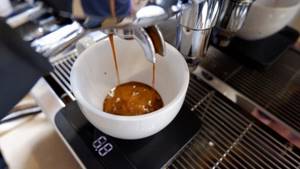
©https://www.perfectdailygrind.com
With lever machines, the barista has everything under control. If a certain coffee needs a longer pre-wet, or requires a certain pressure profile to achieve flavor, this is not a problem. These machines give freedom for creativity and experimentation.
Lever coffee machines are attractive, and the lack of electrical components can be an advantage. They're not as common today and certainly wouldn't be suitable for a busy coffee shop, but if you want to make steampunk coffee, this is the machine for you.
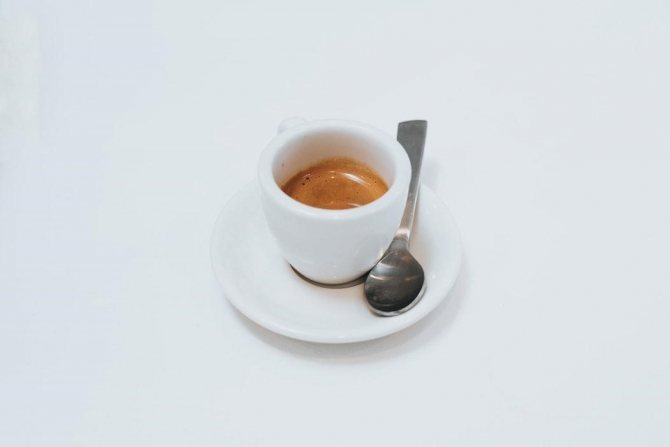
©https://www.perfectdailygrind.com
But why does making espresso have to be a complicated process? Lever coffee machines require physical effort and an understanding of how to control variables. But such complete human control can lead to instability in taste.
Most lever coffee machines only have one boiler and rely on the water to cool down before interacting with the coffee, which can lead to inconsistent results.
Sean Aupiais is the founder of the Red Band Barista Academy in the Eastern Cape (South Africa). He says he values stability. “When it comes to buying equipment, there are always a lot of pros and cons, but stability for me is definitely one of the most important selection criteria,” he says.

©https://www.perfectdailygrind.com
Recommendations for selection
- Pay attention to the vapor pressure. For home coffee makers, you can take machines with steam pressure from 4 to 9 bar.
- It is not critical if the device body is made of plastic rather than metal. The main thing is that the horn itself is made of metal, preferably high-quality stainless steel. This will significantly improve the taste of the prepared coffee drink.
- The larger the family or the number of people consuming coffee, the larger the container you need to choose. The cost of the coffee maker itself depends on the size of the boiler. For household appliances, the best choice would be a tank volume of 1 liter.
- The power of the device is also important. In order to save money, it is better to choose models with a power of up to 1 kW.
- And, of course, you need to pay attention to the dimensions of the selected device so that it fits harmoniously into your interior.
Advice!
Carob-type devices usually do not have a coffee grinder. Therefore, it is recommended to purchase it separately and grind the coffee beans right before brewing them. The drink will be more aromatic and tasty. Ratio to get delicious coffee: for every 30 ml of water you will need from 7 to 9 g of coffee. Watch a video about how a carob coffee maker works
